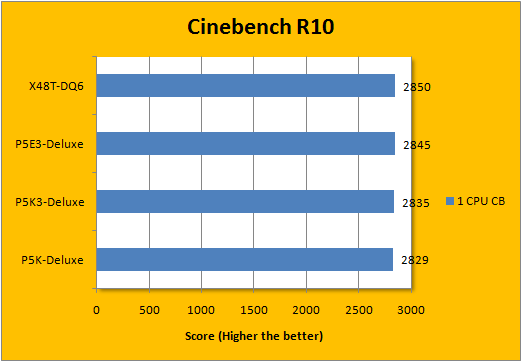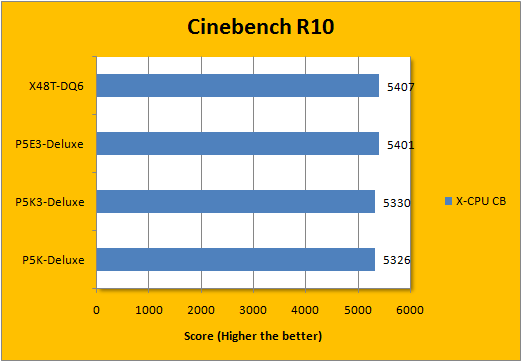Page 6 - Benchmark: Cinebench R10, SuperPI 1M
About Cinebench R10
CINEBENCH is a real-world test suite that assesses your computer's performance capabilities. MAXON CINEBENCH is based on MAXON's award-winning animation software, CINEMA 4D, which is used extensively by studios and production houses worldwide for 3D content creation. MAXON software has been used in blockbuster movies such as Spider-Man, Star Wars, The Chronicles of Narnia and many more.
MAXON CINEBENCH runs several tests on your computer to measure the performance of the main processor and the graphics card under real world circumstances. The benchmark application makes use of up to 16 CPUs or CPU cores and is available for Windows (32-bit and 64-Bit) and Macintosh (PPC and Intel-based).
The resulting values among different operating systems are 100% comparable and therefore very useful with regard to purchasing decision-making. It can also be used as a marketing tool for hardware vendors or simply to compare hardware among colleagues or friends.
From: Developer's Page


For this review, we've updated to the latest version of Cinebench, Cinebench R10, for our benchmarking. Generally speaking, all four boards up for the tests were as close as they can get to each other for the single threaded performance tests. However, once the X-CPU (Multithreaded) test is dropped into the zone, the Asus P5E3-Deluxe and Gigabyte X48T-DQ6 again posted relatively better leads -- where the Gigabyte board again had a slight edge over the Asus X38 motherboard.
About SuperPI
Super PI is a computer program that calculates pi to a specified number of digits after the decimal point - up to a maximum of 32 million. It uses FFT arithmetic and Borwein's quartically-convergent algorithm and is a Windows port of the program used by Yasumasa Kanada in 1995 to compute Pi to 232 digits. Super PI uses x87 floating-point unit, so it favors processors with good FPU performance, such as AMD Athlon 64 and Intel Core 2.
From: Wikipedia (March 14, 2007)

SuperPI to one million digits generally aren't affected by the motherboard, but to measure and verify consistency we implemented this benchmark. All four motherboards are consistent in this area and obtained a time of 19 seconds with our 1600MHz FSB QDR Core 2 Duo CPU.
Page Index
1. Introduction, Features, and Specifications
2. Bundle, Chipset, BIOS
3. A Closer Look, Board Layout
4. Test System; Benchmark: 3DMark06
5. Benchmark: PCMark05
6. Benchmark: Cinebench R10, SuperPI 1M
7. Benchmark: EVEREST CPU
8. Benchmark: EVEREST FPU
9. Benchmark: EVEREST Memory
10. Benchmark: EVEREST Memory Latency, HDTach 3.0.1.0
11. Onboard Sound (RMAA 6.06) Analyzation
12. Overclocking and Conclusion





